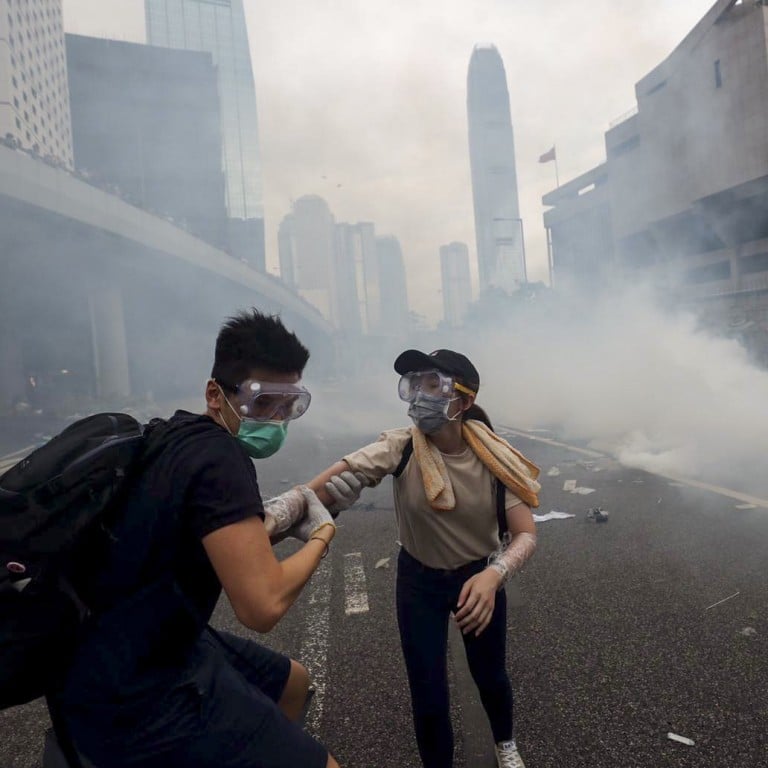
Hong Kong protests: use of force was ‘necessary and lawful’ says former police chief Andy Tsang, who was in charge when officers fired at Occupy protesters in 2014
- Tsang says officers should not apologise for use of tear gas, rubber bullets, and beanbag rounds
- But former top official admits to judging situation based on what he watched on TV
The use of force by Hong Kong police during last week’s extradition bill protest, which triggered the siege of its headquarters on Friday night, was “necessary and lawful”, a former chief said.
Tsang, who has been nominated by Beijing to lead the UN’s drugs and crime division, spoke hours after thousands of young protesters ended a 15-hour siege of the force’s headquarters on Saturday morning, with police vowing to “stringently follow up” on their “illegal activities”.
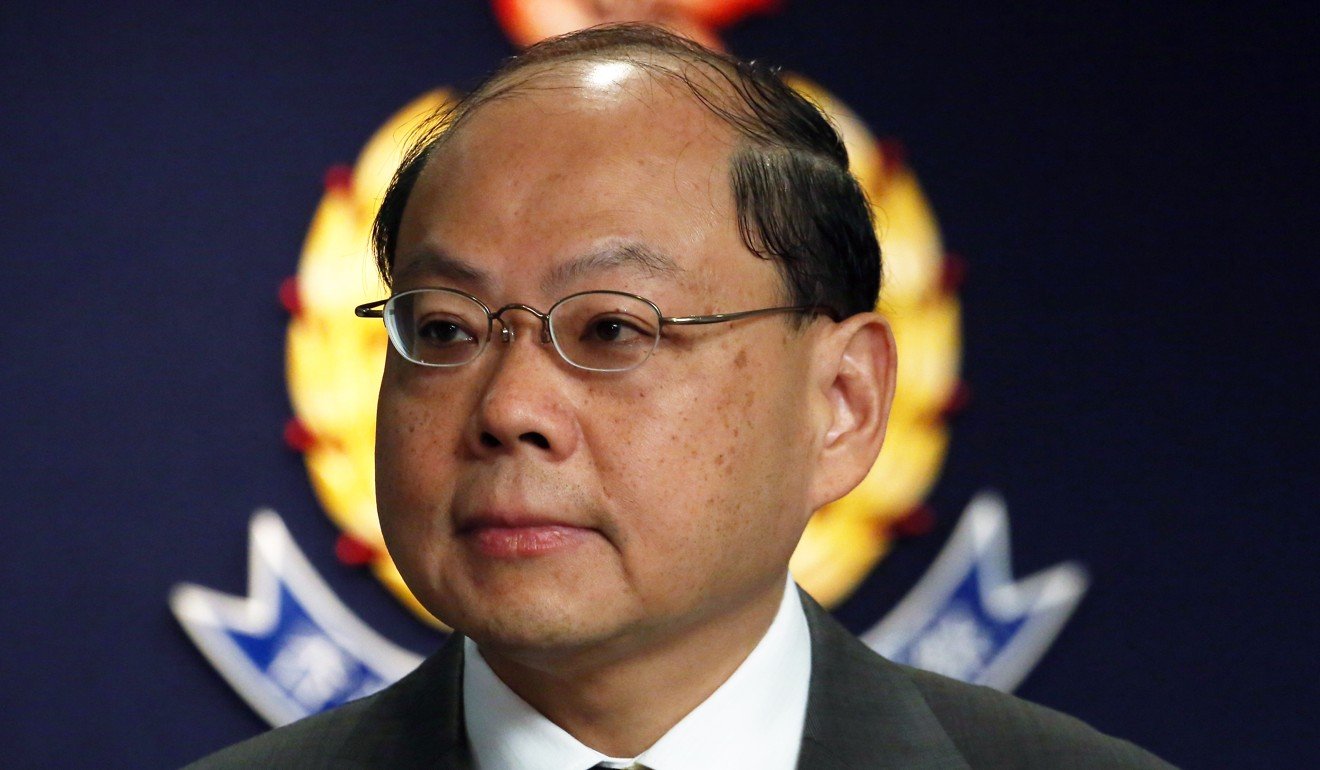
He also had a “friendly warning” for protesters who demanded that the government and police not prosecute arrested suspects for rioting.
“Prosecution should be a legal instead of political decision, otherwise the rule of law will collapse,” he said.
The protesters in the siege have accused police of using excessive force on June 12, when the crowd outside the government headquarters in Admiralty stormed onto the roads nearby and blocked traffic.
“If the police found tear gas insufficient to stop the violent attacks, they had to deploy a higher level of force,” Tsang said. “I think this time they were both necessary and lawful.”
But he admitted he was judging the situation after watching the clashes on television.
An investigation could be one way to find out if police had used excessive force, Tsang said, but he stopped short of indicating whether it should be carried out by an independent committee, one of the protesters’s demands. That should be for the government to decide, he said.
The former police chief, famous for his hawkish style, said senior officials should not easily make public apologies.
“I don’t want making apologies to become endemic,” Tsang said.
Extradition bill protesters besiege police HQ after mobile rallies
The legislation at the centre of the protest would have allowed the transfer of suspects to mainland China and other jurisdictions with which the city currently has no extradition agreement.
At the siege of the police headquarters, the crowd demanded the complete withdrawal of the bill, and the exoneration of those arrested during previous clashes, after a Thursday deadline for Chief Executive Carrie Lam Cheng Yuet-ngor to respond passed without any sign from her.
Tsang spoke hours after a day of unprecedented defiance against the government and law enforcers over the now suspended extradition bill.
In a statement issued at around 5am, police said protesters had blocked the headquarters’ exits, thrown eggs at the compound, drawn graffiti on the walls, covered closed-circuit television cameras with tape, splashed oil on officers and targeted laser beams at officers’ eyes.
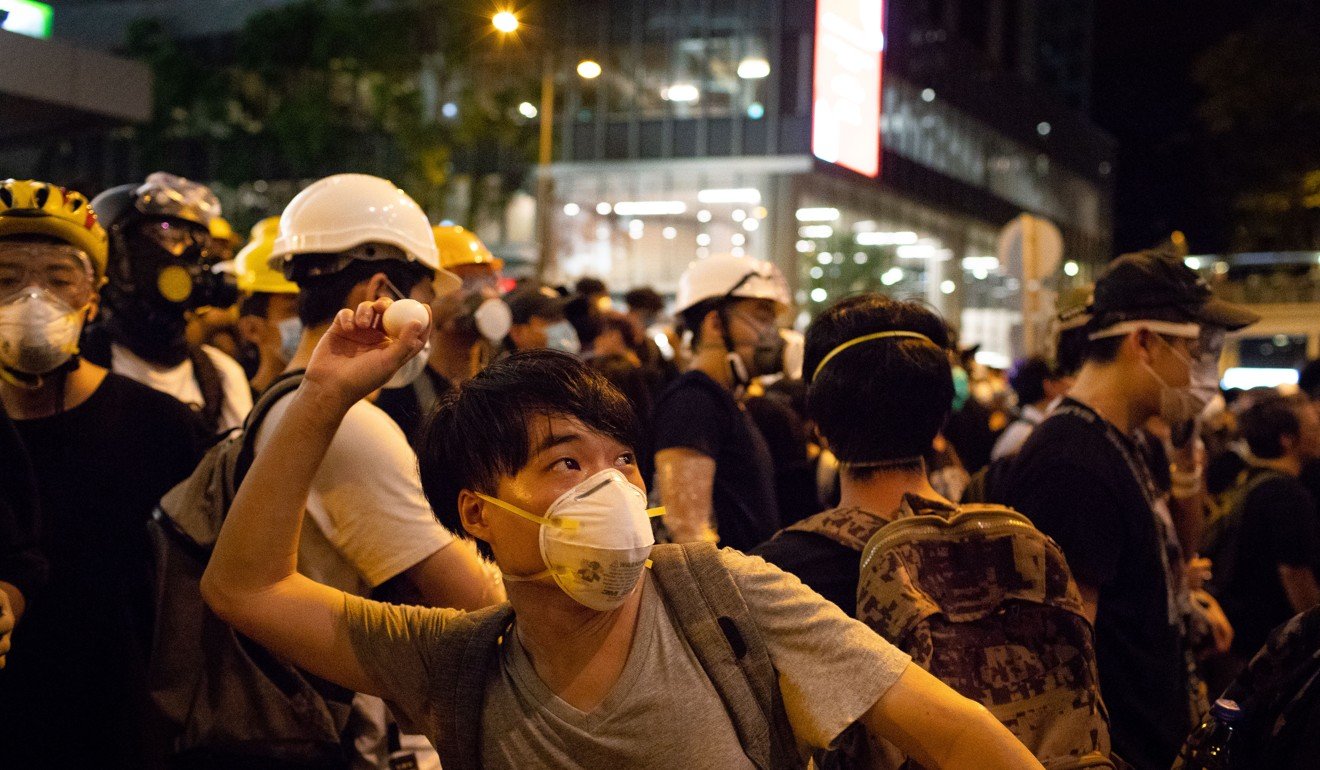
“Police have shown the greatest tolerance to the protesters who assembled outside [the headquarters], but their means of expressing views have become illegal, irrational and unreasonable,” the force said in the statement. “Police will stringently follow up on these illegal activities.”
The dramatic stand-off at the Arsenal Street police base in Wan Chai ended at 2.40am as staff and officers trapped in the building began coming out of a back entrance to board waiting coaches.
On Saturday, at about 9.30am roughly a dozen protesters remained outside government headquarters and the legislative complex in Admiralty.
The siege ended peacefully after hours of drama that saw thousands of youths blocking all entrances to the headquarters, pelting the front with eggs, and extraordinary moments as people needing medical treatment left the building, some on stretchers. One was a pregnant woman.
It was a protest like none Hong Kong had ever seen, starting on Friday morning with well-organised young men and women, many of them students, occupying Harcourt Road outside the city’s legislative and administrative headquarters.
During the siege, police said, 60 ‘999’ calls to the Wan Chai Division could not be immediately handled.
Police added that nine female and four male staff members were sent to hospital for treatment after a “considerable delay”.
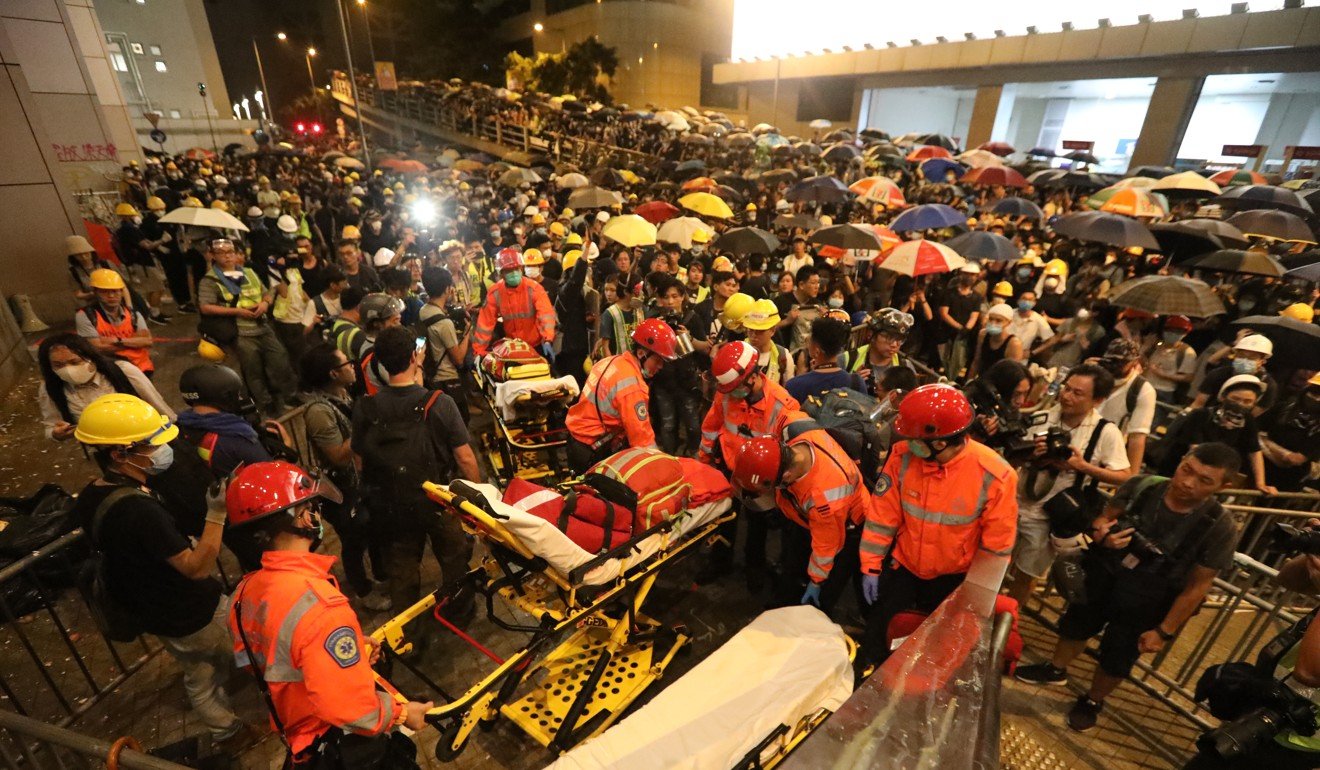
One of those who stayed until the end was not disappointed.
“It seems as though nothing has been achieved today, but we need to look at it longer term,” he said.
“We have successfully showed the government our stance and determination, and that whenever we call people, they will come out.”
At the height of the siege, protesters were seen flashing light beams at police filming them from within the building, and the smell of rotting eggs filled the air amid the heat and humidity.
As it happened: How bill protesters continued siege of police HQ
A stranded senior inspector told Cable TV she was four months’ pregnant, and had a 14-month-old son at home.
“Our supervisors tried to arrange for pregnant colleagues to leave the premises twice but we were blocked [by the protesters] at the exit,” she said. “We tried to talk to them and it was no use.”
Another senior inspector, who claimed to have a six-year-old daughter with a rare disease, said: “I’m depressed for being unable to take care of [my family] physically and emotionally.”
No police action was taken the entire time, and Council Front lawmaker Au Nok-hin said protesters had stuck to their “no bloodshed, no injuries and no arrests” principle.

A protester who only identified himself as Sam, 34, slept overnight at Legco after joining the siege on Friday night.
“If the government responds to our demands, we will leave immediately. We are smarter this time because we learned our lesson from Occupy about the importance of public support,” he said.
“The government is using the tactic they always use, delaying, to try to decrease public support for us. But we will not stop until they withdraw the bill and respond to our demands.”
He accused the police of adopting “immature tactics” for not letting an ambulance through the police gate Friday night, while suggesting protesters had blocked it.
“But people can see clearly that we are peaceful and rational in our protests,” Sam said. “If an ambulance passes through, we will part like the Red Sea. They are shameless.”
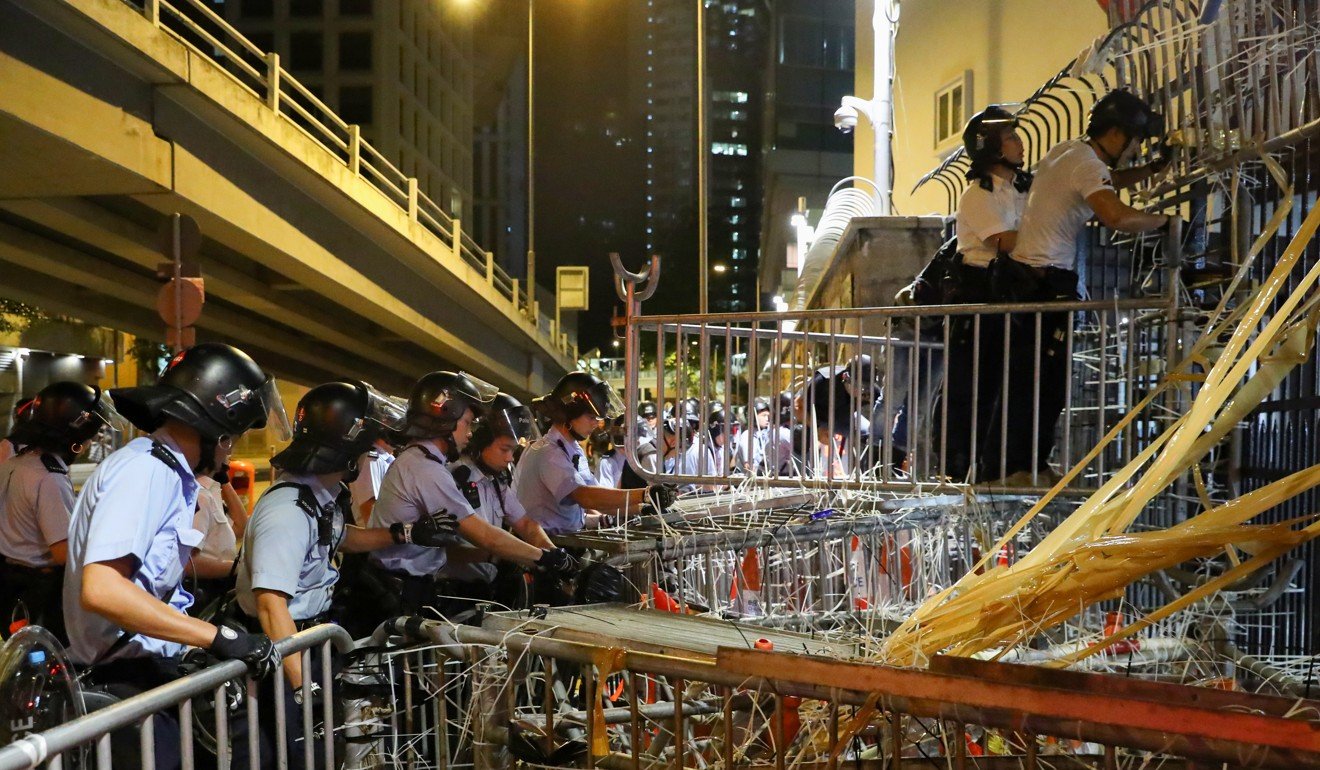
Outside police headquarters, an extensive clean-up operation was under way on Saturday morning to clear the remnants of smashed eggs, and the graffiti that had been daubed on the walls of the complex.
Most offensive messages directed at the force were covered up, and police publicity photos that were defaced were torn down.
Some CCTV cameras remained covered having been done so by protesters earlier on Friday.
Additional reporting by Sarah Zheng, Danny Lee, and Danny Mok


